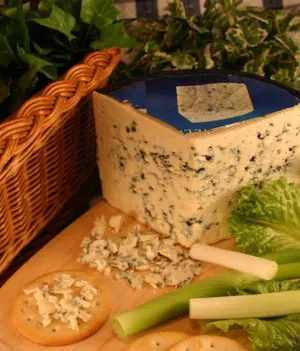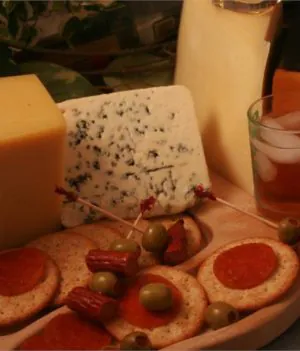Blog
Blue Cheese: Everything You Need to Know
What is blue cheese?
Blue Cheese is a generic term for cheeses that have had Penicillium cultures added creating dark blue or blue-grey veins throughout the cheese. It can be made from cow, sheep, or goat’s milk and is typically aged in a temperature and moisture-controlled environment like a cave.
How was blue cheese discovered?
Blue Cheese is said to have been discovered by accident. Cheeses in Europe were aged in high moisture caves which are also an ideal environment to produce mold. Gorgonzola dates back to around 879 AD and Roquefort was invented in 1070. Subsequent Blue cheeses were invented to fill the demand for Roquefort like cheeses. We prefer Danish blue, as it is more moderate in its sharpness and more creamy.
What does it taste like?
The characteristic flavor of blue cheese is usually sharp and salty, but levels of sharpness vary by region. It can be eaten by itself or crumbled or melted over foods. We know that blue cheese can divide opinion, so we’ve put together a list of tips that will help you to appreciate it!
Serve it at the right temperature
The unique flavor of blue cheese is best appreciated at room temperature to allow the flavors and textures to be enhanced. This goes for most cheeses: they should not be served straight from the fridge if you want to truly enjoy them.
Serve it with the right drinks pairing
Blue cheeses are strong, rustic-flavored cheeses and go best with similarly strong, flavored foods and drinks, and with tannic red wines such as Cabernet Sauvignon, Pinot Noir, Syrah, Zinfandel, and even Port. For beer lovers, the cheese compliments porters and stouts perfectly. It also pairs very well with Scotch, which is why we offer it with our Scotch collection.
Serve it with the right foods
Just as blue cheese deserves strong flavors from drinks, it needs them from food too. One classic combination is cheese with fruit. Pears, figs, and apples all stand up well to the flavor as they each have a sweetness that cuts through the saltiness of the cheese. The earthy quality of mushrooms brings out the same flavors in the cheese and the crunch of celery will contrast with the creaminess of any blue cheese.
It’s just as important to consider texture as well as flavor. Find crunchy foods to pair with the soft texture of the cheese and you’ll find it really stands out.
Start small
If you’re not yet a blue cheese fan, start by trying small pieces as part of a cheeseboard. You’ll gradually be able to move up to crumbling a little into soup or over pasta. In no time you’ll be asking for it on pizza and enjoying it with a glass of port! Let it surprise you. Sometimes we think we might not like something but in the right combination it is our new favorite dish.
Do you think you could become a blue cheese lover? We really do recommend trying our Danish Blue – it’s converted many a customer in the past!
Let us know your favorite blue cheese pairings in the comments!







